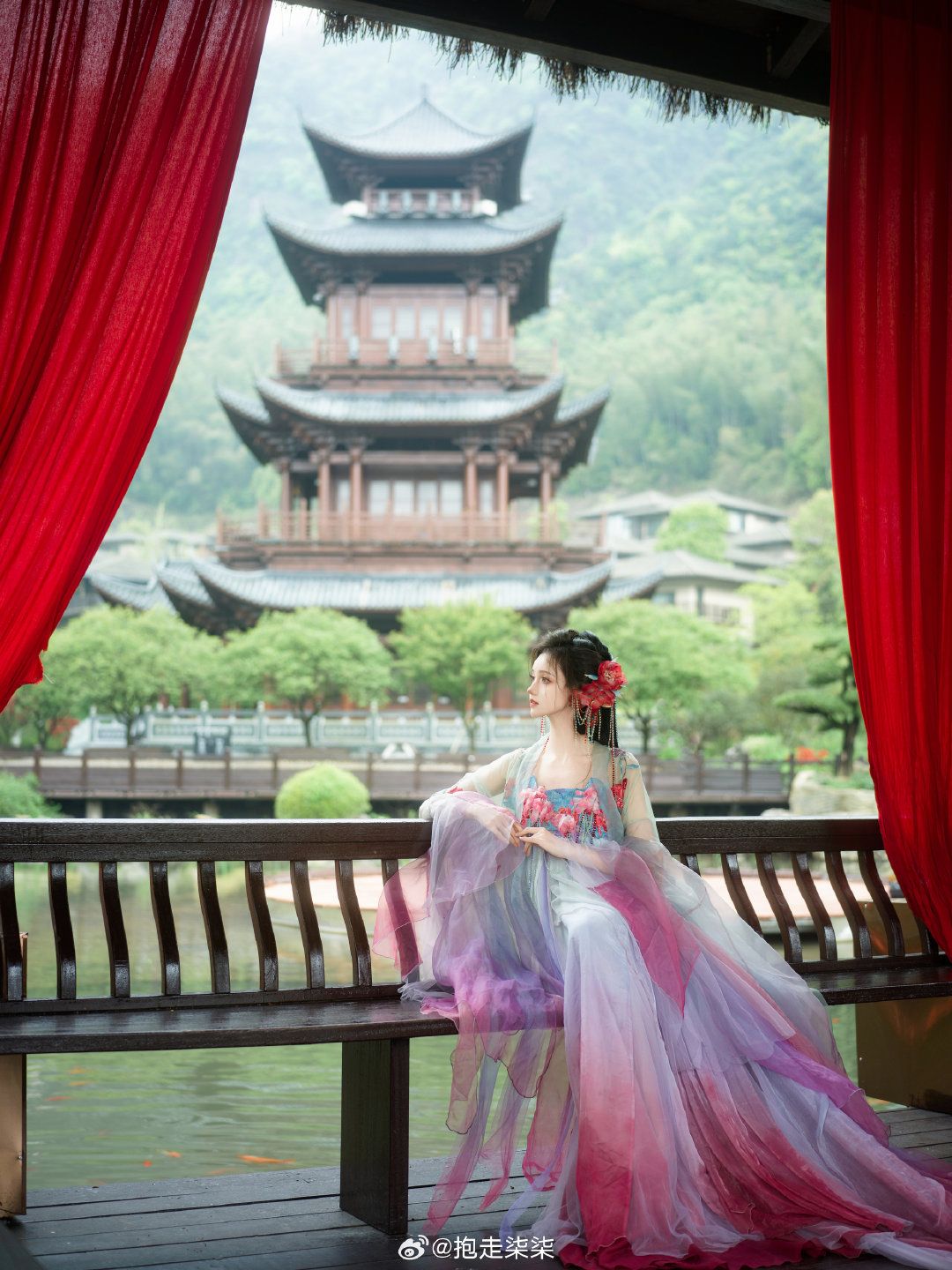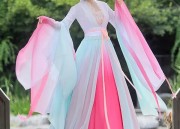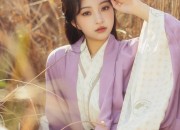The Ming-Style Upper Garments and Horseface Skirts:A Journey into Traditional Chinese Fashion
In the annals of Chinese history, the Ming Dynasty stands out as a pivotal period in fashion and art. Among the numerous innovations and traditional elements that emerged during this era, the Ming-style upper garments paired with horseface skirts are particularly noteworthy. These ensembles not only reflected the cultural zeitgeist of the time but also continue to inspire modern fashion enthusiasts and designers.

The Ming-style upper garment was typically worn over a thin under-robe, often embroidered with intricate patterns and designs. These robes were cut in a way that accentuated the wearer's figure, emphasizing both elegance and comfort. The collar, often decorated with intricate lace or embroidery, was a prominent feature that distinguished this garment from its predecessors. The sleeves were usually wide and flowed gracefully, symbolizing harmony and balance.
The horseface skirt, an integral part of the Ming-style ensemble, was a full-length skirt with a distinctively shaped front panel that resembled a horse's face. This skirt was made from silk or other luxurious materials and was often adorned with intricate embroidery and patterns. The horseface design not only added a unique aesthetic value but also symbolized status and authority. It was a common practice to pair the upper garment with a matching belt, which further emphasized the wearer's waistline and added a sense of elegance.
The colors and patterns used in these ensembles were often influenced by cultural and religious beliefs. Bright hues like red, yellow, and green were often associated with power and authority, while more subdued colors were worn by commoners. The intricate embroidery patterns often featured symbols that represented good luck, prosperity, and harmony.
The Ming-style upper garments and horseface skirts were not only worn for ceremonial occasions but also for everyday wear. They were designed to be comfortable and practical, allowing the wearer to move freely without any restrictions. These ensembles were also tailored to suit different age groups and social statuses, ensuring that everyone could wear them with pride and dignity.
The influence of these Ming-style ensembles extends far beyond the historical period. Modern designers often incorporate elements of Ming fashion into their creations, paying homage to the rich cultural heritage of China. The intricate embroidery, vibrant colors, and unique cut of these traditional garments have inspired modern fashion trends and have been embraced by fashion enthusiasts worldwide.
In conclusion, the Ming-style upper garments and horseface skirts are not just historical attire; they are a testament to China's rich cultural heritage and fashion history. These ensembles continue to inspire modern designers and fashion enthusiasts, bridging the gap between traditional and modern fashion. They are a reminder of the beauty and versatility of traditional Chinese culture and continue to captivate hearts across the globe.
Today, as we look back at the history of fashion, it's important to appreciate and understand the rich cultural heritage that has shaped it. The Ming-style upper garments and horseface skirts are a prime example of this heritage, reflecting a time when fashion was not just about aesthetics but also about cultural identity and symbolism. As we move forward into the future, it's important to remember our roots and continue to draw inspiration from our rich cultural past.
Related Recommendations
-

The Little Girl in Traditional Ming-Style Hanfu:A Journey into Chinese Cultural Heritage
-

The World of Childrens Hanfu Sleeve Binding A Journey into Traditional Elegance
-

The Splendor of Traditional Hanfu Dance Costumes:A Journey Through Time
-

Reimagining Traditional Hanfu Skirts for Modern Women:A Journey of Fashion Evolution


